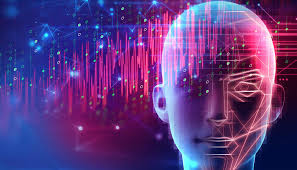Source- searchenterpriseai.techtarget.com
While the conversation about artificial intelligence is centred on augmenting the enterprise or adding value to daily lives, there is also unique interest and effort in applying AI to creative human pursuits. While artificial intelligence creativity might not seem relevant to enterprises, the use of machine learning to generate images and video, craft text for ad copy, marketing materials, press releases and speeches has a definite impact in the business sector.
AI turns to text
AI systems that create and generate text of all forms have been used with surprisingly good results. Early experiments in natural language generation (NLG) were focused on converting numerical and quantitative data into a more natural narrative form. In the past, this would have required human analysts to spend hours poring over data to generate reports. However, AI-based systems can now easily complete content summarization and report generation with very similar levels of quality in just minutes.
News organizations and media outlets — ranging from Bloomberg, The Washington Post, The New York Times and Forbes — have been using NLG systems to generate content for general consumption. Other companies in the financial, insurance, legal and healthcare industries are adopting AI-based NLG systems to generate content that can be consumed by nontechnical users. The user-friendly content produced includes financial reports in human-readable text form, synopses of healthcare records and data, and analysis of legal cases and intellectual property research for legal workers.
Recently, OpenAI released a deep learning neural network model that can generate entire paragraphs of coherent text from just a small block of introductory words, phrases and facts. OpenAI’s artificial intelligence creativity platform focuses on maintaining coherence and accuracy at a large scale- from 500 to thousands of words. Even in its limited released form, these pretrained neural network models are proving to be very helpful in generating longer-form content that would otherwise be the job of marketing, analysts or communications teams in an organization.
Generating audio, speech and music
Computer-generated speech has been around for decades — however most of that generated speech comes from a list of preprogrammed output responses, or by combining words together from a preselected list. It’s only recently that speech and audio are being generated without manual interference by systems that use AI and machine learning to generate good quality audio that mimics human speech.
In May 2018, Google demonstrated this at their Google I/O event with a demo of their Google Duplex intelligent assistant. The assistant was able to make phone reservations for a haircut and book restaurant reservations with the human on the other end of the call unaware they were speaking with a robot. The assistant generated conversations, responded to questions and elaborated on information while using frequent human pauses, interjections and fillers.
In 2016, Adobe’s VoCo preview showed the ability to modify existing audio to say things speakers didn’t actually say; using existing clips to change intent. These demos, still unfinished, show the power of AI-enabled voice and speech generation that could be used for a wide range of practical purposes.
In addition to human speech, AI is enabling a high-quality generation of music and other audio output. In 2018, YouTube personality Taryn Southern released a record produced and composed entirely by AI. While Southern provided inputs that controlled the feel of the music, the AI system was able to generate new music by synthesizing existing tracks. The immediate application of this technology is to produce original, royalty-free music for video background music or other applications.
Does this photo exist?
Some of the most powerful examples of artificial intelligence creativity tools are in the creation of images and video. Machine learning systems using deep learning approaches are able to create lifelike images of people that don’t actually exist using GANS image compilation. Other AI-based systems can create original advertising copy and images, generate original film trailers for movies, and create new paintings mimicking and adhering to the style of notable artists.
The applications of artificial intelligence creative technology in the enterprise range from marketing departments generating original hyper-personalized advertisements to healthcare organizations generating helpful videos tailored to the specific needs of their patients. Whatever the intent, the use of machine learning to create images and video is on a path from fringe use to the mainstream application.
The bigger question surrounding creative AI is, are these systems exhibiting real creativity or simply mimicking the creative ability of humans? Where does the line of adaptation and imitation end and creativity begin? While we seek the metaphysical answers, AI-based systems remixing human creative output to generate new results are proving to be extremely valuable for organizations in generating text, images and audio they need without requiring the human labor for creativity.
